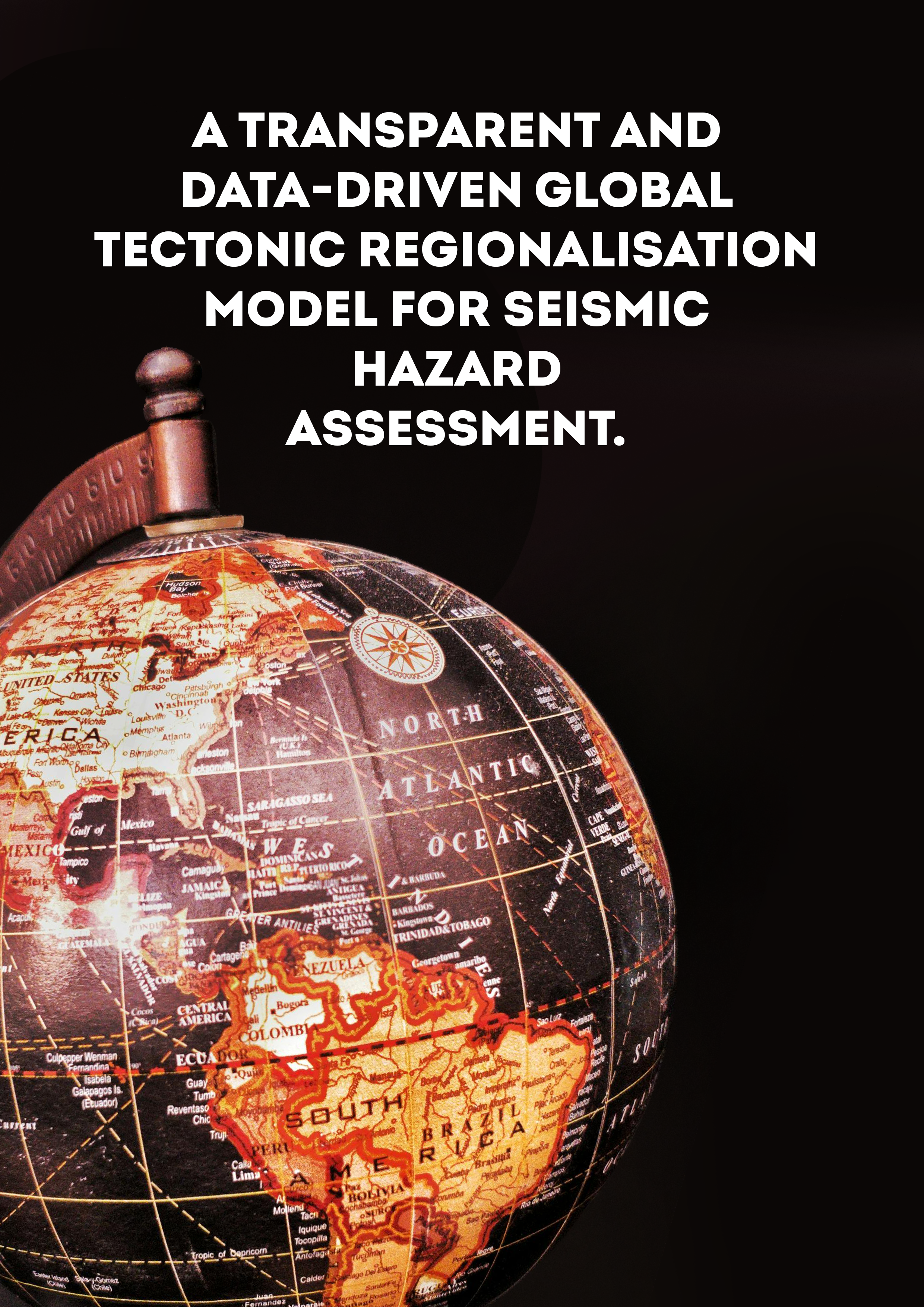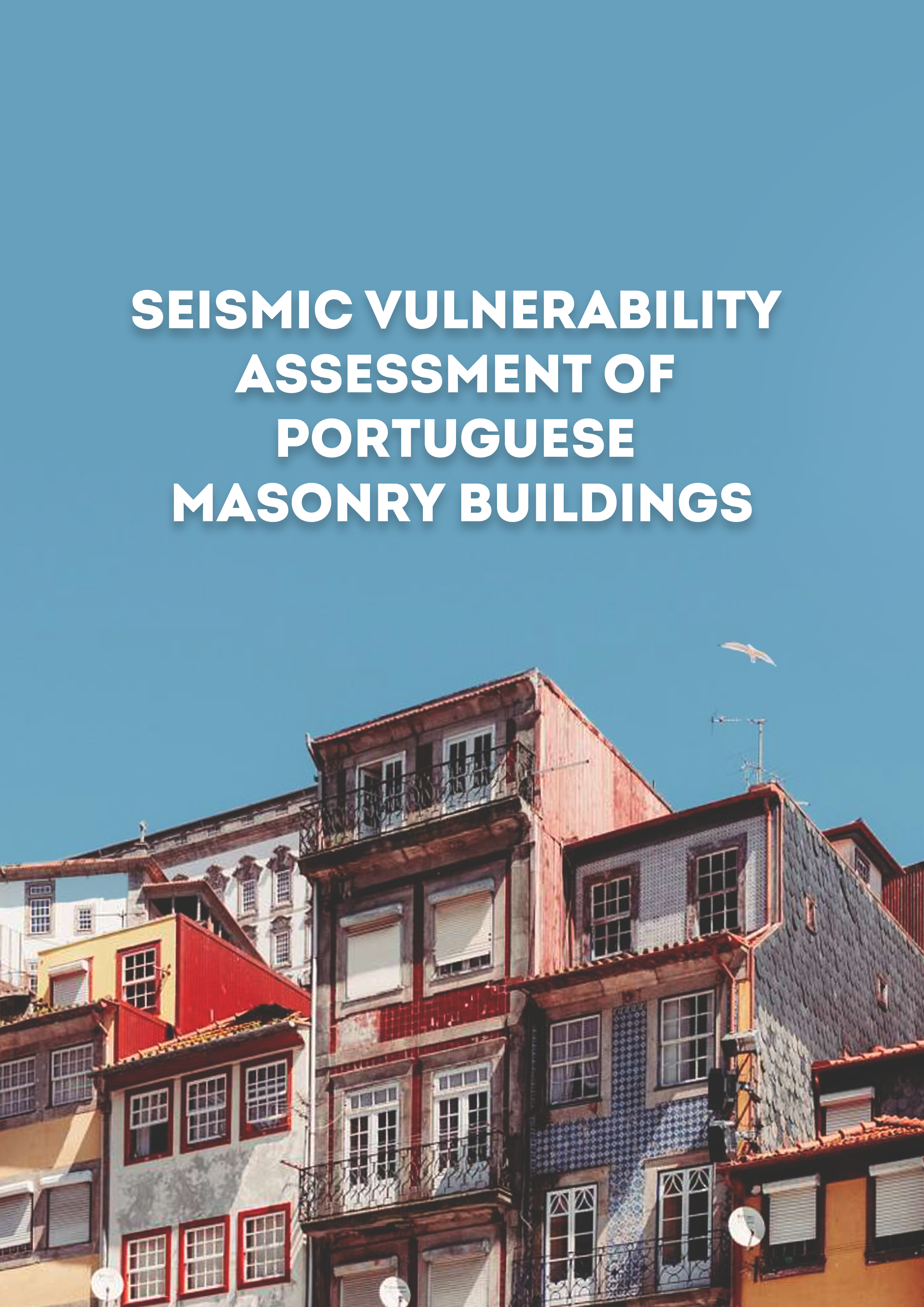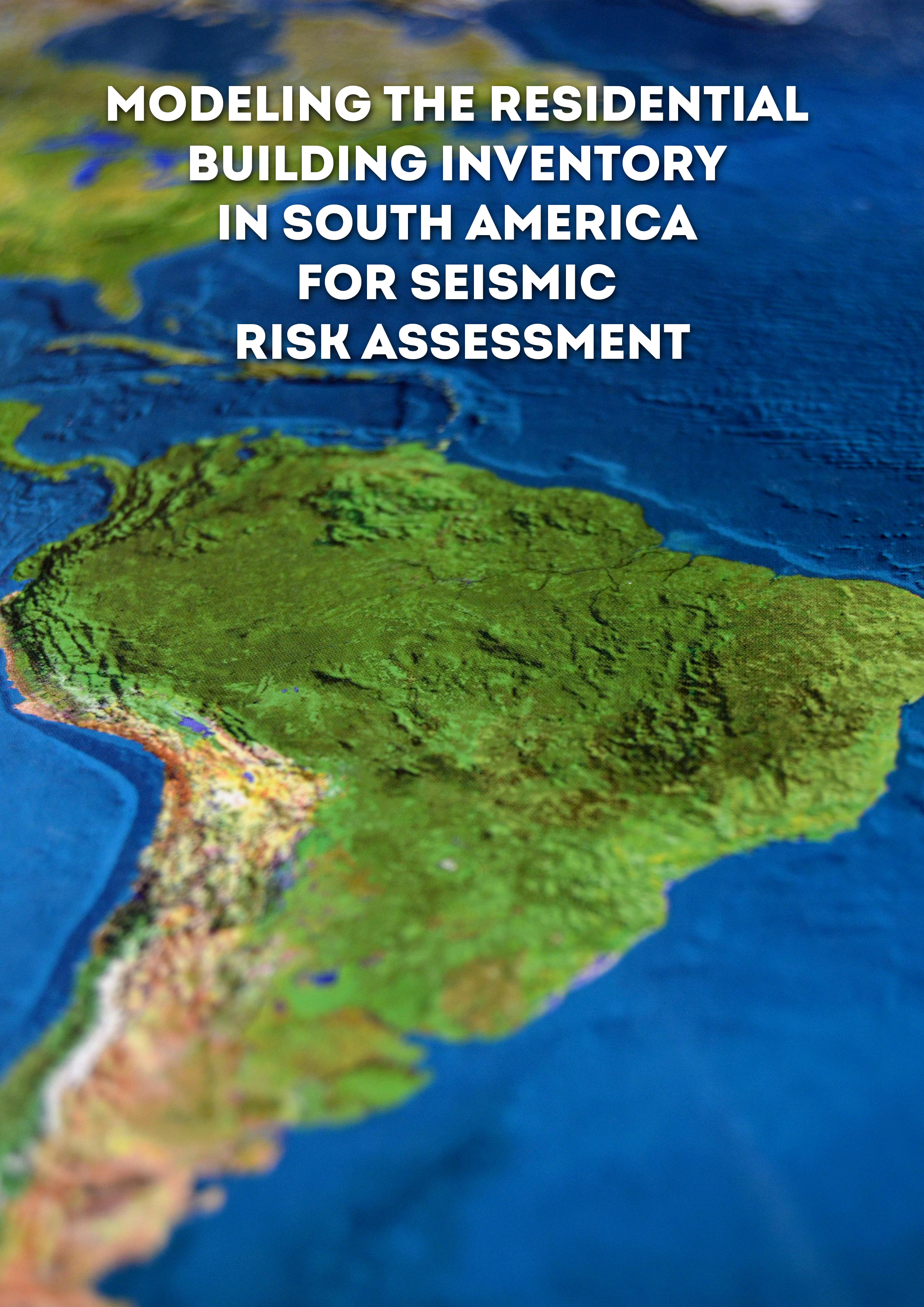QUICK LINKS
PROFILES
PUBLICATIONS
EXPOSURE
VULNERABILTY
SOFTWARE
EQ MODELS
Search Results
1045 results found with an empty search
- A transparent and data-driven global tectonic regionalisation model for seismic hazard assessment | GEM Foundation
Publications A transparent and data-driven global tectonic regionalisation model for seismic hazard assessment Share Facebook LinkedIn Download 2018 | Peer-reviewed A key concept that is common to many assumptions inherent within seismic hazard assessment is that of tectonic similarity. This recognizes that certain regions of the globe may display similar geophysical characteristics, such as in the attenuation of seismic waves, the magnitude scaling properties of seismogenic sources or the seismic coupling of the lithosphere. Previous attempts at tectonic regionalization, particularly within a seismic hazard assessment context, have often been based on expert judgements; in most of these cases, the process for delineating tectonic regions is neither reproducible nor consistent from location to location. In this work, the regionalization process is implemented in a scheme that is reproducible, comprehensible from a geophysical rationale, and revisable when new relevant data are published. A spatial classification-scheme is developed based on fuzzy logic, enabling the quantification of concepts that are approximate rather than precise. Using the proposed methodology, we obtain a transparent and data-driven global tectonic regionalization model for seismic hazard applications as well as the subjective probabilities (e.g. degree of being active/degree of being cratonic) that indicate the degree to which a site belongs in a tectonic category.
- Survey to align GEM products and services with the needs of users and stakeholders coming soon - GEM Foundation
News Survey to align GEM products and services with the needs of users and stakeholders coming soon By: Mar 17, 2020 Share Facebook LinkedIn The GEM Foundation will be conducting a user and stakeholder survey in the second quarter of 2020 to better understand what products (e.g. models, datasets, maps); technical support (e.g. bespoke software), standalone or web applications; and services (e.g. hazard and risk assessment, training, etc.) for seismic hazard and risk assessments are needed by the insurance/reinsurance industry, engineering companies, researchers and academia, and government agencies or institutions that deal with disaster risk reduction. The survey also aims to gather information on how downloaded GEM products e.g. OQ engine, country profiles, plug-ins, maps, datasets are currently being used by the public, private and academic sectors. GEM intends to use this information not just to improve existing products and services but also to establish close collaboration with user groups and stakeholders who benefit from GEM’s resources. We appreciate the value of your time so we will make sure that the survey would be easy to complete and would not take too much of your time. No images found. GALLERY 1/0 VIDEO RELATED CONTENTS
- Request demo for North America Exposure | GEM Foundation
You have chosen to request a demo on: North America Exposure First Name Last Name Email Company or Institution Name Country Sector Provide Details I accept the license terms and the conditions of products use. Email us at product@globalquakemodel.org if you're experiencing problems submitting this form or if you have any inquiries. Thank you. Request Thanks for submitting! You will be contacted as soon as possible Add answer here
- Seismic vulnerability assessment of Portuguese masonry buildings | GEM Foundation
Publications Seismic vulnerability assessment of Portuguese masonry buildings Share Facebook LinkedIn Download 2023 | Peer-reviewed According to the 2011 National Housing Census, masonry buildings comprise more than 50% of the Portuguese building stock. This type of construction has demonstrated a poor performance during the destructive events that struck Portugal in the last century (e.g., 1909 M6.3 Benavente, 1969 M7.8 Algarve, 1980 M6.9 Azores). While some efforts have been made towards the vulnerability assessment of individual masonry buildings or the residential building stock at the national scale, this building class has been the target of limited research. In this study, a comprehensive database of material and geometric properties of granite and limestone buildings was used to generate complex 3D numerical models. These models were subjected to nonlinear time history analysis to derive fragility curves considering the record-to-record and building-to-building variability. The structural damage was defined using two novel engineering demand parameters, and the resulting fragility functions were compared against other existing models. These results can be used directly to generate earthquake scenarios at the country scale or in probabilistic seismic risk analysis to identify regions where risk reduction measures should be prioritized.
- Albania’s Institute of Geosciences (IGEO) and GEM collaborate to update the national seismic hazard model - GEM Foundation
News Albania’s Institute of Geosciences (IGEO) and GEM collaborate to update the national seismic hazard model By: Apr 11, 2023 Share Facebook LinkedIn GEM and IGEO-Albania are currently implementing a 1-year project funded by the Central European Initiative (CEI - https://www.cei.int/ ) and the Albanian Electricity Corporation (KESH - https://www.kesh.al/en/ ) to update Albania’s probabilistic seismic hazard model through a series of technical workshops. The first and second workshops, which took place in Pavia, Italy from January 23-27 and March 21-24, focused on analyzing and converting earthquake catalogs and databases into GEM’s OpenQuake database format - NRML (Natural Hazard Risk Markup Language); and the selection of Ground Motion Prediction Equations (GMPEs) respectively. The third and fourth workshops will focus on running and calibrating the model in the OpenQuake engine based on the results of the previous workshops. The expert supervisor from the Albanian Team was Prof. Dr. Neki Kuka who brings extensive knowledge in this area. The IGEO contingent was composed of Anila Xhahysa, Edmond Dushi, Damiano Koxhaj, Klajdi Qoshi, Besian Rama, Migena Ceyhan and Kristina Matraku. In the first workshop held in January, GEM had the opportunity to chat with Edmond Dushi, Seismologist and Vice Director of the Institute of Geosciences, (IGEO); and Anila Xhahysa, Structural Engineer and Head of the Seismology Department (IGEO). Below are some of the excerpts from the interview. On the motivation of IGEO-Albania to partner with GEM “Our building code is quite old and outdated, dating back to 1989 and it’s based on a macroseismic intensity map, hence with the adoption of the Eurocode normative, we are hoping that this partnership would help us update the probabilistic seismic hazard model for Albania, in order to support the national annex of this new Design Code”, Anila said. Anila further added, “We already have a seismic hazard model which is substantially good. However, there are features that we would like to improve like the ground motion prediction equations and adaptive smoothing, being dynamically updated with recent research”. Edmond said, “The partnership is also an opportunity to share the institute’s experience with earthquake cataloging and what we’ve learned about earthquake faults based on our studies in the past. Our institute is the main institution on geosciences and we are working mainly on recording earthquake events and building the database. We also need to have more detailed models of faults and the ability to link together these two classes of information”. Interview with IGEO's Edmond Dushi (R), Seismologist and Vice Director, and Anila Xhahysa, Structural Engineer and Head of the Seismology Department. OpenQuake – Bridging IGEO and GEM Anila joined an online OpenQuake training in 2022. It was the first time that she used the software and found it a great platform for building PSHA as well as stochastic models. This led her to request in-person training, which started the discussion about IGEO’s hazard modelling needs. The project was developed with Marco Pagani, GEM Hazard Team Coordinator, which was eventually funded by the European Investment Fund. From the institutional side, Edmond added that IGEO has been working to connect with groups or organizations that use the latest or most advanced methods working in the field of seismic hazard modelling. As a small institution with limited resources to develop its own advanced tools, Edmond added that IGEO saw an opportunity to partner with GEM to address the current gaps. On the importance of the GEM partnership Edmond and Anila expect that the partnership will significantly improve the quality of future seismic hazard model development. Both also expected that the partnership would extend from the current focus on hazard to the development of seismic risk models. They summarized the importance of the partnership into three key areas: -Improvement of public and private seismic risk reduction strategy- By dynamically updating Albania’s seismic hazard model using GEM tools and methodologies, national risk reduction strategies will improve and move toward modernization. On the private sector side, both foresee that insurance companies will be able to develop tailor-fit products for their clients. -Better emergency response planning- Since Albania’s civil protection uses IGEO’S data and tools for emergency response planning, an improved seismic hazard model based on the latest science would lead to a better warning system and emergency response in the country. -Modernization of seismic hazard modelling- Both agreed that the partnership would help in IGEO’s journey towards modernization and could even influence the current institute’s philosophy and practices in developing future seismic hazard maps in favor of an open and more robust hazard modelling framework. On their impression of the workshop “The presentation of the modeling workflow was good and I believe it can be adopted by many organizations as a framework for improving the processing of future hazard models. Within this context, I see that there are some parameters within this framework that can lead us to improve our data and actual model for future needs,” said Edmond. Anila found the workshop “great, substantive and concise. The workshop had sound theoretical information and I think that made it beneficial for us”. Parting words “We hope that this local project will serve as an example for other government agencies in other fields of studies in Albania to open up their codes and their products, to start sharing to improve our systems and hopefully make Albania a better and more disaster resilient country.” – Anila and Edmond, IGEO. No images found. GALLERY 1/10 VIDEO RELATED CONTENTS
- GEM Team | Global Earthquake Model Foundation | Italy
GEM is comprised of the Secretariat, a Governing Board from public, private, academic and non-government organizations worldwide, and an Advisory Board GEM TEAM GEM, comprised of the Secretariat, a diverse Governing Board, and an Advisory Board, strives collectively to enhance earthquake risk reduction globally. Operating from EUCENTRE in Pavia, Italy, our international Secretariat spearheads efforts in data development and hazard and risk assessment. Learn more about our team members below. Share Facebook LinkedIn Organigram Secretariat Management Support Hazard Team Risk Team I.T. Advisory Board Governing Board Anchor 1 Joerg Steffensen Hannover Re Chair Daniela Di Bucci Department of Civil Protection, Italy Vice Chair Iain Stewart University of Plymouth, UK Advisory Board Vice Chair Laurie Johnson Laurie Johnson Consulting, U.S.A. Advisory Board Chair Marco Pagani Head of Seismic Hazards Helen Crowley Secretary General Vitor Silva Head of Risk Engineering Paul Henshaw Director of Tech. & Devt. Christopher Brooks Seismic Hazard Scientist United Kingdom Kendra Johnson Senior Seismic Hazard Scientist United States Kirsty Bayliss Seismic Hazard Scientist United Kingdom Manuela Villani Senior Seismic Hazard Scientist Italy Richard Styron Senior Active Faults Specialist United States Fahrettin Kuran IUSS Pavia Türkiye Jarod Domenge University of Milano Bicocca France Zainab Asaad IUSS Pavia Lebanon Antonio Ettorre Systems Administrator Italy Armando Scarpati Frontend Developer Italy Matteo Nastasi Senior Software Developer Italy Michele Simionato Senior Software Developer Italy Paolo Tormene Senior Software Developer Italy Amir Taherian University of Aveiro Iran Fatemeh Alishahiha IUSS Pavia Iran Furkan Narlitepe IUSS Pavia Turkey Julian Montejo University of Chieti-Pescara Colombia Salvador Ramos University of Aveiro Mexico Zarin Karim Zadeh University of Aveiro Iran Astha Poudel University of Lisbon Greece Mara Mita University of Porto Portugal Chiara Pigoli Accounting & Administrative Officer Italy Jephraim Oro Communications Coordinator Philippines Jessica Campo Administrative & Social Media Asst. Italy Pratim Parash Kalita Product Manager India Beatrice Giorgi Human Resources Italy Ettore Festa Health and Safety Manager Italy Giuseppe Lombardi Human Resources Italy Jamal Dabbeek Arab States Regional Coordinator Palestine Simone Aliprandi Contracts and Licensing Advisor Italy Al Mouayed Bellah Nafeh Physical Vulnerability Lead Lebanon Alejandro Calderon Exposure Research Lead Costa Rica Anirudh Rao Seismic Risk Modelling Lead India Catalina Yepes Exposure Development Lead Colombia Catarina Costa Infrastructure Risk Lead Portugal Daniela González González Exposure Analyst Colombia Karim Aljawhari Physical Vulnerability Modeller Palestine Marco Baiguera Exposure Analyst Italy Martina Caruso Seismic Risk Modeller Italy Daniel Gomez Exposure Analyst Colombia Lana Todorovic Liquefaction and Landslide Modeller Montenegro Helen Crowley Secretary General United Kingdom Marco Pagani Head of Seismic Hazards Italy Vitor Silva Head of Risk Engineering Portugal Paul Henshaw Director of Tech. & Devt. United Kingdom Renato Solidum, Jr. Advisory Board Member Philippines Abderrahim Oulidi Governor Morocco Nouaman Al Aissami Member Morocco Finn Løvholt Advisory Board Member Norway Japan Iain Stewart Advisory Board Vice Chair United Kingdom Andrew Dhesi Governor Bermuda Türkiye Load more Public Governors BGS-NERC Member Public Governor Sponsor. Voting Member GNS Science Member Public Governor Sponsor. Voting Member State Secretariat for Education, Research and Innovation Member Public Governor Sponsor. Voting Member Department of Civil Protection, Italy Member Public Governor Sponsor. Voting Member and Vice-chair GeoScience Australia Member Public Governor Sponsor. Voting Member Taiwan Earthquake Model-TEM Member Public Governor Sponsor. Voting Member Fonds de Solidarité contre les Événements Catastrophiques (FSEC) Member Public Governor Sponsor. Voting Member National Research Institute for Earth Science and Disaster Resilience Member Public Governor Sponsor. Voting Member Private Partners Governors Allianz Sponsor Private Governor Sponsor. Voting Member EUCENTRE Sponsor Private Governor Sponsor. Voting Member Marsh McLennan/Guy Carpenter Sponsor Private Governor Sponsor. Voting Member RMS Sponsor Private Governor Sponsor. Voting Member Verisk Sponsor Private Governor Sponsor. Voting Member Aon Sponsor Private Governor Sponsor. Voting Member Factory Mutual Insurance - FM Sponsor Private Governor Sponsor. Voting Member Munich Re Sponsor Private Governor Sponsor. Voting Member Renaissance Re Sponsor Private Governor Sponsor. Voting Member Willis Towers Watson Sponsor Private Governor Sponsor. Voting Member Atlantic Re Sponsor Private Governor Sponsor. Voting Member Hannover Re Sponsor Private Governor Sponsor. Voting Member and Chair PartnerRe Sponsor Private Governor Sponsor. Voting Member Swiss Re Sponsor Private Governor Sponsor. Voting Member Zurich Insurance Group Sponsor Private Governor Sponsor. Voting Member Advisors AXA Sponsor Advisor Sponsor. Non-Voting Member Gallagher Re Sponsor Advisor Sponsor. Non-Voting Member Safehub Sponsor Advisor Sponsor. Non-Voting Member CelsiusPro Sponsor Advisor Sponsor. Non-Voting Member NormanMax Insurance Solutions Sponsor Advisor Sponsor. Non-Voting Member Descartes Underwriting Sponsor Advisor Sponsor. Non-Voting Member One Concern Sponsor Advisor Sponsor. Non-Voting Member Associate Partners APDIM Member Associate. Non-Voting Member IASPEI Member Associate. Non-Voting Member UNESCO Member Associate. Non-Voting Member EERI Member Associate. Non-Voting Member IRDR Member Associate. Non-Voting Member United States Geological Survey (USGS) Member Associate. Non-Voting Member IAEE Member Associate. Non-Voting Member UNDRR Member Associate. Non-Voting Member Load more Renato Solidum, Jr. Advisory Board Member Philippines Abderrahim Oulidi Governor Morocco Nouaman Al Aissami Member Morocco Finn Løvholt Advisory Board Member Norway Japan Iain Stewart Advisory Board Vice Chair United Kingdom Andrew Dhesi Governor Bermuda Türkiye Load more
- Request demo for Global Exposure Model | GEM Foundation
You have chosen to request a demo on: Global Exposure Model First Name Last Name Email Company or Institution Name Country Sector Provide Details I accept the license terms and the conditions of products use. Email us at product@globalquakemodel.org if you're experiencing problems submitting this form or if you have any inquiries. Thank you. Request Thanks for submitting! You will be contacted as soon as possible Add answer here
- Modelling the Residential Building Inventory in South America for Seismic Risk Assessment | GEM Foundation
Publications Modelling the Residential Building Inventory in South America for Seismic Risk Assessment Share Facebook LinkedIn Download 2017 | Peer-reviewed This study presents an open and transparent exposure model for the residential building stock in South America. This model captures the geographical distribution, structural characteristics (including information about construction materials, lateral load resisting system, range of number of stories), average built-up area, replacement cost, expected number of occupants, and number of dwellings and buildings. The methodology utilized to develop this model was based on national population and housing statistics and expert judgment from dozens of local researchers and practitioners. This model has been developed as part of the South America Risk Assessment (SARA) project led by the Global Earthquake Model (GEM), and it can be used to perform earthquake risk analyses. It is available at different geographical scales for seven Andean countries: Argentina, Bolivia, Chile, Colombia, Ecuador, Peru, and Venezuela.
- News Briefs: January - March 2025 - GEM Foundation
News News Briefs: January - March 2025 By: Apr 5, 2025 Mar 31, 2025 Share Facebook LinkedIn GEM’s Vitor Silva Receives Prestigious ASCE Award GEM’s Head of Risk Engineering, Vitor E. Silva, has been awarded the Walter L. Huber Civil Engineering Research Prize by the ASCE. The prize recognises his significant contributions to regional seismic risk assessment through collaborations, open data/software, and machine learning. The award ceremony will be held on October 10 at the ASCE Annual Convention in Seattle. New Part-Time Regional Coordinator Joins GEM GEM has welcomed Jamal Dabbeek, former GEM PhD student, as a new part-time collaborator. As the Arab States Regional Coordinator, Jamal will focus on seeking funding and collaboration opportunities, promoting GEM’s software and data, engaging the community in developing the North Africa seismic hazard model, and organising a GEM/OpenQuake training course in Arabic. GEM Secretary General Presents at Aon IF EMEA Team Meeting Helen Crowley, GEM’s Secretary General, delivered a presentation at the Impact Forecasting UK & EMEA Team Meeting in Prague. The session highlighted the fruitful three-year partnership between Aon IF and GEM and explored future areas of collaboration, such as exposure modelling and forecasting. The meeting provided an opportunity to strengthen ties and discuss ongoing partnership initiatives. GEM Reflects on a Milestone Year: 2024 Before moving forward into 2025, the Global Earthquake Model (GEM) Foundation looks back at 2024 - a year of significant achievements, innovations, and strategic collaborations enhancing global earthquake resilience. Discover the key moments and milestones from 2024 in GEM’s Year in Review. Read more: https://www.globalquakemodel.org/GEMNews/gem-2024-year-in-review GEM Experts Lead PSHA Training at METIS Online Course GEM’s Manuela Villani and Kirsty Bayliss led sessions on probabilistic seismic hazard analysis (PSHA) as part of the EURATOM METIS online training. The course, coordinated by SSTC NRS and RPTU Kaiserslautern-Landau, focused on advancing seismic safety assessments for nuclear reactors in Europe. Participants explored the application of OpenQuake and METIS tools in seismic hazard modelling. GEM Celebrates 16 Years of Advancing Earthquake Risk Science The Global Earthquake Model (GEM) Foundation marks 16 years of pioneering open, science-based tools and data to reduce earthquake risk worldwide. Founded on a vision of global resilience, GEM continues to shape policies and collaborations through cutting-edge seismic hazard and risk models. Explore GEM’s journey and future initiatives. Learn more: GEM’s Work – products , projects , and vision to 2030 GEM Develops Embodied Carbon Service with BED (Build Environment Data) GEM has developed a new Embodied Carbon service under the auspices of the Built Environment Data (BED) initiative. The service provides critical data on the embodied carbon linked to seismic damage repair and replacement and is supported by the EPOS-ON project . GEM aims to expand the service to global coverage in the future. Explore the European service: https://maps.eu-risk.eucentre.it/map/european-seismic-embodied-carbon-viewer/#4/52.48/7.34 GEM’s FORCE Project Concludes The FORCE (Forecasting and Communicating Earthquake Hazard and Risk) project has ended due to funding cuts and restructuring at USAID. Funded by USAID’s Bureau for Humanitarian Assistance, FORCE aimed to strengthen seismic risk assessment in El Salvador, Bhutan, Nepal, and the Southwest Pacific. GEM remains committed to advancing earthquake resilience and is actively seeking new funding opportunities. (see LinkedIn message) Learn more: https://www.globalquakemodel.org/proj/force GEM Launches PAPERS Project The Global Earthquake Model (GEM) Foundation has launched the PAPERS project (Piattaforma Analisi Pericolosità E Rischio Sismico), an initiative aimed at developing a new WebGIS platform for scenario hazard and risk assessment in Italy. The project has been funded as one of the cascade grants launched by the High-Performance Computing, Big Data e Quantum Computing Research Centre, one of the five National Centres established by the Italian National Recovery and Resilience Plan (NRRP), under Spoke 5 - Environment and Natural Disasters . The first training workshop of the project related to the use of the OpenQuake engine was successfully conducted online on April 1st, 2025, marking the first in a series of planned training events. This first workshop also served for exploring potential third-party contributions to models that could be integrated into the platform. Learn more: PAPERS webpage - https://www.globalquakemodel.org/proj/papers-gem GEM Joins RENOMIZE Project to Promote Sustainable Renovation GEM has joined the EU-funded RENOMIZE project, which aims to revolutionise renovation practices through automation and optimisation. Supported by CINEA, the project aims to reduce costs and environmental impact by streamlining the renovation process with cutting-edge technologies. GEM’s Physical Vulnerability Lead, Al Mouayed Bellah Nafeh, participated in the kickoff meeting in Klagenfurt, Austria, sharing insights on integrating risk-informed approaches into sustainable renovation. Testing will take place in five countries: Switzerland, Spain, Estonia, France, and Belgium. Learn more: RENOMIZE Project - https://www.globalquakemodel.org/proj/renomize GEM Celebrates UN Women’s Day and Women and Girls in Science In celebration of International Women’s Day and the International Day of Women and Girls in Science, GEM reaffirmed its commitment to gender equality in STEM. Guided by GEM’s Gender Equality Strategy, the foundation strives for inclusivity and equal opportunities, highlighted by a 0% gender pay gap among its scientific staff in 2024. GEM continues to promote diversity through awareness, training, and equitable career growth. Learn more: GEM’s Gender Equality Plan - https://www.globalquakemodel.org/gempublications/gem-foundation-gender-equality-plan No images found. GALLERY 1/0 VIDEO RELATED CONTENTS
- GEM moves to boost the availability of its Products and Services to a wider range of stakeholders - GEM Foundation
News GEM moves to boost the availability of its Products and Services to a wider range of stakeholders By: Jul 25, 2020 Share Facebook LinkedIn The Products and Services Strategy was approved by the Governing Board on June 19, 2020. GEM’s strategy for development of products and services is to facilitate the merging of the interests of public and private sectors to work together to fully assess risk and incorporate risk-based decisions into planning and sustainable development; to spearhead the development of common tools and solutions; and to provide a range of products and services for the combined disaster risk management and reduction community. As part of GEM’s long-term sustainability plan, GEM intends to generate funds from a combination of the following: Sponsorships – to support GEM’s global role as an independent and trusted authority on earthquake hazard and risk issues acting in the public interest; Institutional projects – to support applications of core capability such as the development of hazard models for public benefit; and For-a-fee applications – to bring value-added products to down-stream users such as for insurance or catastrophe bonds, or for the design of buildings and infrastructure. However, Check the summary of our products . A complete list of products is coming soon and will be available on our website. In the meantime, here's a list of models that will be released in September and December this year. Caribbean & Central America (v. 2018) South America Indonesia Southeast Asia Taiwan South Africa Korea Mexico Northeastern Asia Northwestern Asia Pacific Islands UCERF3 Conterminous US Alaska Canada (v.2015) Hawaii Japan Philippines No images found. GALLERY 1/6 Gallery VIDEO RELATED CONTENTS






















